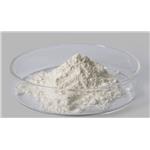Naturally occurring in the skin, Ceramide EOP, also known as ceramide 1, is part of the extracellular matrix that consists of mainly lipids; these waxy molecules are found between the skin cells, resulting in them playing a vital role in keeping the skin surface healthy and hydrated. There are over 340 specific species of ceramides found, and ceramide EOP was the first to be identified in labs in 1982; it has a unique structure which is enriched in fatty acids and linoleic acid and can form a water-proof film on the outer layer of the skin. This helps the skin from drying out and combats any free radicals from penetrating the skin and causing some levels of damage.
Ceramide EOP, also known as Ceramide NP, plays a crucial role in skin barrier function by contributing to the structural integrity of the lipid matrix in the stratum corneum. Ceramides are essential components of the extracellular lipid matrix, along with cholesterol and free fatty acids, forming a protective barrier against water loss and external irritants. Studies have shown that ceramides, including Ceramide EOP, are vital for skin hydration, cell adhesion, and epidermal differentiation, thus helping to maintain skin barrier function. Furthermore, incorporating ceramides into skincare formulations, such as ceramide-containing cleansers and moisturizers, has been demonstrated to repair barrier damage caused by conditions like acne vulgaris and enhance skin barrier function by reducing dryness, redness, and scaling. Therefore, Ceramide EOP is a critical player in maintaining skin health and integrity through its contribution to the skin barrier function.


